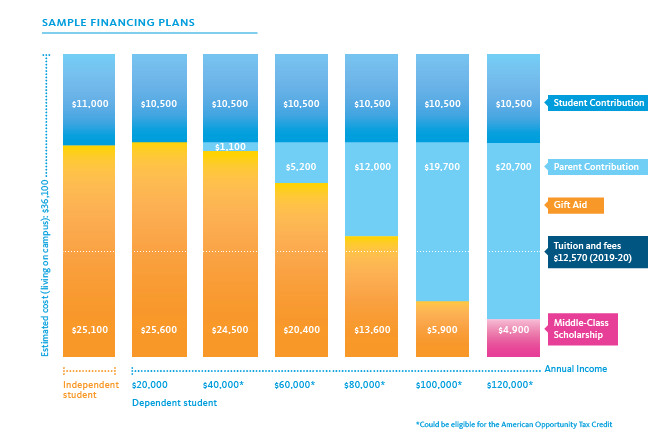
California has many high schools. It's important to compare the features and amenities offered by each school. These include Academic programs, Student bodies, and sports teams. You can also find information about the types and locations of high schools in California. Learn about the different products and companies that specialize in these types of projects. CMD has a list of California high schools you can search for.
Schools
California's local and state governments have made investments in school facilities. CC+S teamed up with American Architectural Foundation to produce a report that details the growth in K-12 school construction spending and renovation spending. The study found significant disparities in school facilities based on race, neighborhood income, and student demographics. Here, we'll explore some of the reasons why school facilities are often outdated and in need of repairs. Learn about the advantages and disadvantages of high schools with new facilities.
Local and state officials don't focus their funding on the most need districts, which could reduce funds available for education. This study examines California's policies regarding school facility funding. It also examines how funding has been distributed in different districts since 2006.

Academic programs
You can achieve success in your academic career by enrolling in an academic program. California high schools offer many programs that can help students prepare for college. Students can earn college credits while they're still in highschool through AP programs. AVID prepares middle-level students to take a rigorous secondary curriculum as well as four-year college eligibility. AVID, a nationally administered program, is administered in California. However, its success in California can be attributed to the efforts of educators who brought the program to California. MESA, however, is designed to motivate and engage students from underprivileged backgrounds to excel at science and math and go on to pursue these subjects.
STaRS symposium explores interdisciplinary methods to improve community and individual health. Students will have the opportunity to gain practical experience as they work on a research project. This is particularly beneficial to students who are interested in studying science or medicine. The STaRS summer program offers high school students the opportunity to conduct basic research and learn the skills of scientists. STaRS interns can also present their work at STaRS symposium, while they pursue basic research.
Sports teams
One quarter of high school football players are on the team. This is a significant drop in the popularity of a sport that draws large crowds. California's high schools continue to produce top-tier recruits despite the drop in participation. The decline in football participation could be due to national trends. CALmatters has recently done an analysis of data from the National Federation of State High School Associations as well as California's Interscholastic Federation. California's tackle-foot participation has dropped by 5 percent in the last decade.
The Central Coast Section consists of over 100 high schools and covers five counties, Daly City to King City. Catholic and Christian high schools compete in the leagues, including football, basketball, and track and field. California's history in high school sports dates back to the late 19th century. In 1895, San Jose High School hosted a football game against Santa Cruz High School. Santa Cruz won by six points. Before the turn of the century, Sacred Heart Cathedral and St. Ignatius met on the gridiron.

Student body
Based on data from the government, data about California's high schools student population are available. These numbers are for high schools that are managed by a state operating agent. Even though there are several high schools in different districts, their overall enrollment remains above the national average. This data is for the 2020-2021 academic years. Data from previous years are presented in a different format. Below are the demographics and student bodies of the high schools in each state.
California's public high schools recently released enrollment numbers. The graduation rate in high school has seen a slight increase, but it remains lower than it was prior to the pandemic. Overall, the graduation rate for California's public high schools has increased by more than one percentage point in the last five years. At 62%, minorities are even more represented than the 78% average.
FAQ
What does it take to be a teacher early childhood?
First, you must decide if early childhood education is what you want to pursue. If so, then you will need to get your bachelor's degree. Some states require that students have a master's level degree.
You will likely also have to attend classes in the summer months. These courses are about pedagogy, the art of teaching, and curriculum development.
Many colleges offer associate degrees that can lead to teaching certificates.
Some schools offer bachelor's or certificates in early childhood education. Others only offer diplomas.
There may not be any need for additional training if your goal is to teach from home.
What is the purpose and function of education?
Education should help students develop skills necessary for employment. Education is more than a academic pursuit. It's a social activity that allows children to learn from one another and gains confidence through participation in arts, music, and sports. Education is about learning to think critically and creatively so that students can be self-reliant and independent. What does it really mean to have high educational standards
A good education system is one that helps all students achieve their potential. These standards provide clear guidelines for teachers to follow with their students. Schools can adapt to changing educational needs if they have good educational standards. Fair and equitable education standards must also be maintained: Every child is equal in terms of chance of success, regardless of his/her background.
What are the types of early child education?
There are many ways to explain early childhood education. Here are some of the most commonly used ones:
-
Preschool - Children ages 2 to 5
-
PreKindergarten- Children from 4-6 years of age
-
Head Start/ Headstart for children ages 0-3
-
Day Care/ Daycares - Children ages 0 to 5
-
Child Care Centers: Children from 0-18
-
Family Child Care – Children aged 0-12
-
Homeschooling - Children from KG to 16
Statistics
- They are more likely to graduate high school (25%) and finish college (116%). (habitatbroward.org)
- Among STEM majors, that number is 83.5 percent. (bostonreview.net)
- And, within ten years of graduation, 44.1 percent of 1993 humanities graduates had written to public officials, compared to 30.1 percent of STEM majors. (bostonreview.net)
- In most developed countries, a high proportion of the population (up to 50%) now enters higher education at some time in their lives. (en.wikipedia.org)
- “Children of homeowners are 116% more likely to graduate from college than children of renters of the same age, race, and income. (habitatbroward.org)
External Links
How To
Why homeschool?
There are several things you should consider when deciding whether your child will attend school at home or in a public school.
-
What kind of education would you like for your child? Do you want academic excellence or social skill development?
-
How involved do you want to be in your child's education? Are you more interested in being kept informed about your child's progress? Do you prefer to keep informed or let your child make the decisions?
-
Are there special needs that your child has? Do your children have special needs?
-
Do you have the ability to manage your children's time? Do you have the time and commitment to teach your child at home each day?
-
What subjects will your course cover? Math, science, language arts, art, music, history, geography, etc. ?
-
How much money do your parents have available for education?
-
Is your child able to go to school?
-
What is the best place to house your child? This includes finding a space large enough for a classroom, as well as providing adequate facilities such as bathrooms and kitchens.
-
What's your child's average age?
-
What time does your child go to sleep?
-
When does he/she wake-up?
-
How long does it take for you to get from A to B?
-
Is your child's primary school close to you?
-
How far is it from your home to your child's school.
-
How will you transport your child to and from school?
-
What are some of the benefits of homeschooling
-
What are their disadvantages?
-
Who will watch over your child when he/she goes outside?
-
What are your expectations for your child?
-
Which type of discipline would you prefer?
-
Which curriculum will you use for your studies?
Homeschooling is a great option for many reasons. Some of these reasons are:
-
Your child may have learning disabilities that prohibit him/her attending traditional schools.
-
You want to provide an alternative form of education for your child.
-
You want more flexibility with scheduling.
-
You do not want to have to pay high tuition costs.
-
You feel your child is getting a better education than you could in a traditional school.
-
You believe that you can teach your child more than the teacher at a traditional school.
-
You don't like how the school system works.
-
You are uncomfortable with the rules and regulations in the school system.
-
Your child should have a strong work ethic.
-
You want the freedom to choose which courses your child takes.
-
You want your child to receive individual attention.
Another benefit of homeschooling is:
-
There's no need to be concerned about books, uniforms pencils, paper or supplies.
-
You have the option to customize your child’s education according their interests.
-
Homeschooling allows parents the opportunity to spend time together with their children.
-
Homeschooled children tend to learn quicker because they are not distracted from their peers.
-
Homeschoolers are more likely to score higher on standardized testing.
-
Families who homeschool tend to be happier in general.
-
Homeschoolers are less likely to drop out.